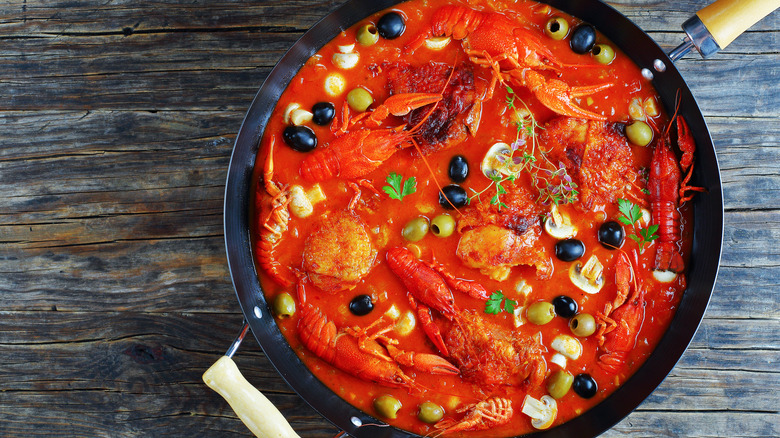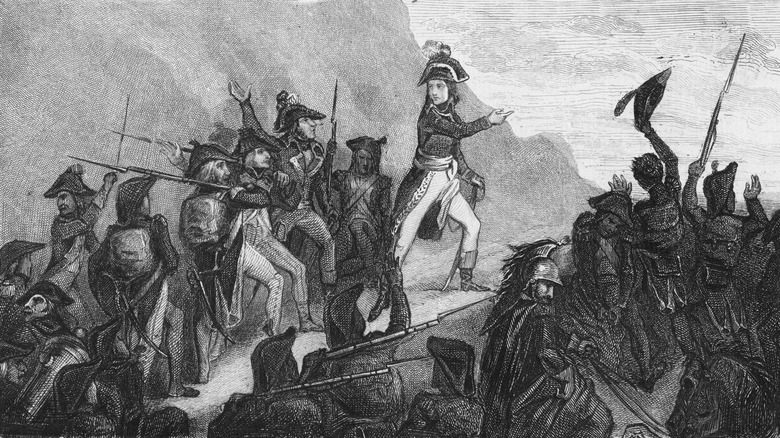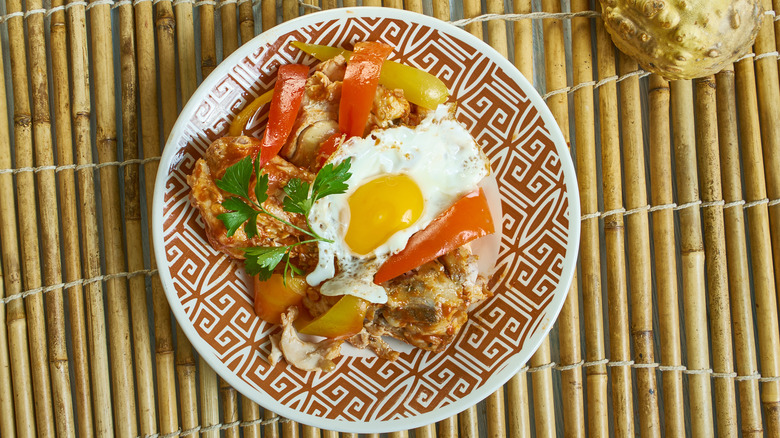Chicken Marengo Was Reportedly Improvised On A Raging Battlefield
No matter how much you like to plan ahead, every cook has had to try and improvise once in a while. Whether it's cooking a meal for unexpected visitors or simply realizing you forgot a key ingredient, most people who spend time in the kitchen have had that moment of panic when the only thing that matters is getting something edible onto a plate. Imagine that pressure if your kitchen was a battlefield and your guest was the victorious leader of your country's troops! This is exactly the situation that legend says led to the creation of one popular French chicken dish: Chicken Marengo.
In 1800, Napoleon Bonaparte led the French army into Italy, where he defeated the Austrians in the battle of Marengo. As The Washington Post details, Napoleon's chef supposedly had to scramble to put together a celebratory dinner for the future emperor but was short on ingredients because the supply wagons had gotten separated in the battle.
Reportedly, he sent men into town to scavenge for ingredients while he foraged the nearby fields for herbs. Between them, they found some chickens, eggs, tomatoes, garlic, a jug of oil, and some bread. Paired with the chef's personal flask of brandy, he improvised a recipe from the pilfered ingredients and served it to Napoleon. The resulting dish was named for the battle, and Napoleon enjoyed it as his post-battle meal from then on.
The varying recipes behind the dish
As fun as it is, the story of Napoleon's resourceful battlefield chef has largely been debunked as the true origin of Chicken Marengo. The Waterloo Association notes that it was likely named in Napoleon's honor as part of the French spin on history following the war, as many of the dish's ingredients would have been unavailable at the time in Marengo. However, despite its uncertain origins, the recipe still remains popular over 200 years later, albeit with some variations.
In fact, the exact list of ingredients in the legendary original dish is not even consistent across retellings. According to The Washington Post, the original recipe calls for chicken, eggs, olive oil, tomatoes, and croutons; however, The Domestic Man notes that the recipe contains crawfish (potentially substituted with shrimp) and supposedly has since day one. Meanwhile, other modern recipes include olives and onions, which seem optional with either mushrooms or seafood depending on who you ask. Despite the variations, the base ingredients Napoleon's men allegedly scavenged have remained largely the same: chicken, tomatoes, olive oil, and wine.
How to make Chicken Marengo
If you are in the mood to give this chicken dish a try at home, the steps are fairly simple. Napoleon.org offers a recipe that would have been typical to the time period the dish was created. Start by lightly browning your chicken pieces in butter and olive oil, then remove them from the skillet and add sliced onions. While the onions sauté, mix chopped tomatoes with your garlic along with salt, pepper, and other herbs, then add them to the skillet with the softened onions and re-add the chicken to the skillet. While they cook, mix wine with flour and water and add it to the skillet before covering it over and letting it all simmer together.
This is where many recipes begin to differ. When the chicken has cooked most of the way through, a second ingredient (either mushrooms, seafood, or olives, depending on the recipe) should be added. Regardless of which ingredient or combination of them you prefer, add in the prepped shellfish or vegetables and allow the dish to continue simmering until the final addition is cooked through. The dish can be plated with bread or croutons on the side and a fried egg on top, though this also varies by recipe or taste. It may be advisable to experiment with which version you like best or improvise with the ingredients you have at hand to keep in the spirit of the dish's legendary origins.


